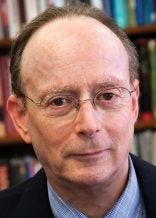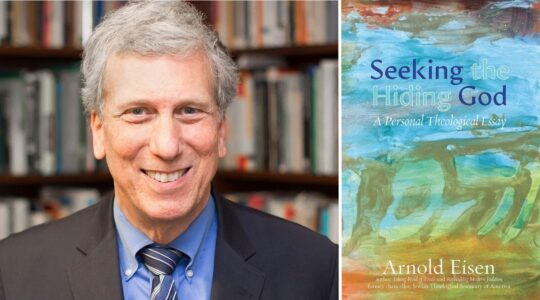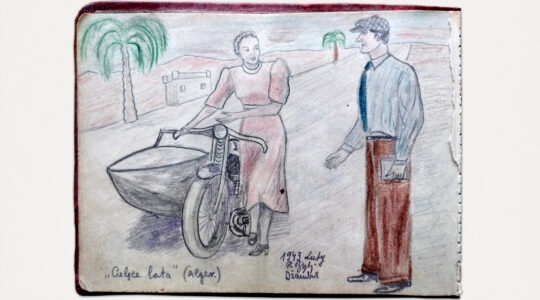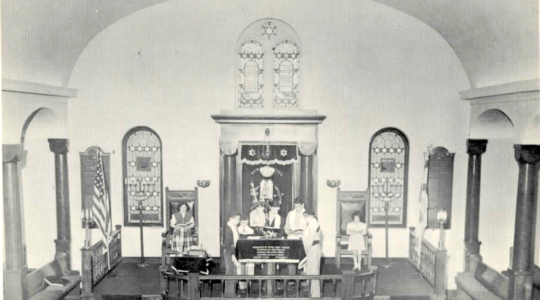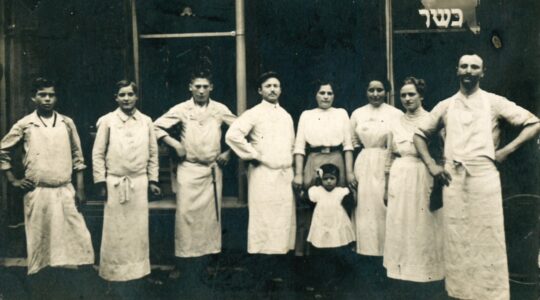Delve into the Haggadah and you understand why there are more editions and variations of it than any other Jewish text. Its story is timeless, its themes are eternal, its message is as current as the day’s headlines.
“In every generation,” we read at the seder, there are new Pharaohs, those who rise up against us and seek our destruction. Even today in the 21st century we are all too aware that anti-Semitism is still with us and flourishing to a frightening degree, particularly in the Middle East and Europe. It is a toxic mix of the old fear and hatred of the Jew as The Other and the new intolerance of Israel, ostensibly for its policies but in truth for its very existence as a Jewish state.
But there is, as well, a distinctly uplifting element to the eminently pliable Passover story, a tale of freedom over slavery, good over evil, and faith over despair. It can be interpreted in countless ways. And it has been.
In his roundup of new editions last week staff writer Steve Lipman noted we can choose from, for example, “The Unorthodox Haggadah: A Dogma-free Passover for Jews and Other Chosen People,” written by a convert to Judaism with a background in comedy; an “Open Orthodox Haggadah,” with readings on agunot, “fertility challenges” and the Women of the Wall debate; and “The Baseball Haggadah: A Festival of Freedom in 15 Innings,” composed by a rabbi at the request of her Little Leaguer sons.
What struck me in preparing for the seder and the task of engaging three generations of family members is that the key passages of the Haggadah speak, in turn, to universal aspirations (“let all who are hungry come and eat”), the uniqueness of being Jewish (why God chose us to be God’s people, and our responsibility to be a light unto the nations) and the chance to reflect on our most personal behavioral traits (which of the Four Children are we?).
No doubt we are a communal combination of the Good and the Wicked sons or daughters, trying to do our best but given to human frailties, and we are at times the Simple Child, overwhelmed by the world around us. And there is the One Who Does Not Know To Ask, more recently seen as the increasing segment of young people so removed from their history and tradition that they feel no connection to the ancestors described in the Haggadah.
Of course the primary point of the seder, and the reason it has survived for so many centuries, is that it is more than a text. It is an experience, and we are told to make it come alive, particularly for the children at the table. Each of us should feel we were present thousands of years ago, tasting the bitter herbs of slavery as well as the wine of freedom and celebration. It’s as if we ourselves were brought out of slavery, free to serve God.
The seder touches on the full range of our emotions. Directly after the meal we vent our frustration over centuries of persecution, calling on God to punish those who have oppressed us. The rabbis say this passage was added to the Haggadah after the period of the murderous Crusades, whose participants often struck at Passover, which coincides with Easter.
In a more positive spirit, scholar and Jewish Week contributor Erica Brown pointed out last week that some have replaced or added to the “Pour Out Your Wrath” passage by beseeching God: “Pour out your love” on those who have sheltered and defended Jews from their enemies throughout history, most recently the Righteous Gentiles who saved Jews during the Holocaust. Immediately after the “wrath” passage, we welcome the Prophet Elijah, the harbinger of the Messiah, who will usher in a time when peace will be complete throughout the world and all will know the Lord.
We have gone, then, in the span of an evening, from recalling the depths of suffering of our forefathers in Egypt to the sublime faith in a perfect future, if not for us, perhaps for our grandchildren or great-grandchildren, or theirs.
After the prayer of Hallel, with its Psalms of gratitude, and the singing of the end-of-seder traditional songs, culminating in Chad Gadya, we close with the prayerful affirmation, “Next Year in Jerusalem.”
Support the New York Jewish Week
Our nonprofit newsroom depends on readers like you. Make a donation now to support independent Jewish journalism in New York.
It is that Holy City, and its fate — next year and going forward — that weigh so heavily on our minds this Passover. The capital of a Jewish state that has come to embody our hopes and fears, Jerusalem today seems both fortified and vulnerable in a world veering toward chaos. In the new topsy-turvy reality that is the Middle East, Egypt, our ancient enemy and persecutor, and Saudi Arabia, a primary source of virulent anti-Semitism, are now aligned with Israel in key ways, sharing a military and strategic outlook. And it is Washington, Israel’s great defender for more than a half century, that seems bent on pursuing a new and worrisome course for the region.
Is the Obama administration more trusting of the United Nations, with its horrific record of bias toward Israel, to deal with Iran and Mideast peace negotiations than the U.S. Congress, a consistently bipartisan defender of Zion? Will younger American Jews steer clear of an Israel increasingly seen as most responsible for the lack of a solution to the Palestinian problem? Will the youngest at our seder table grow up in a world where Israel is viewed as a pariah state, diminished in its ability to provide security for its citizens?
Those worries are all too real at this critical moment in history. But the festival of Passover, the seder and the Haggadah remind us that ours is an eternal story, that our people have struggled and survived against all odds for thousands of years, and that the Jerusalem we yearn for is not only a Promised Land on a map but a place in our hearts where prayers can be answered.
Chag sameach.
The New York Jewish Week brings you the stories behind the headlines, keeping you connected to Jewish life in New York. Help sustain the reporting you trust by donating today.
